When we first got Dorpers we were in a drought and they just out performed everything around. The good years made us forget how hardy and adaptable they are. Now, we are dry again and they are just thriving, fat and content, no worm to worry them and the heat is no problem. Maybe for a little while it is the Dorpers chance to shine again and show what makes them such a welcome addition to our country.
0 Comments
As part of my continuing vendetta against the fox, I attended poison school in Braidwood run by the LHPA. Participation in this course allows me to get 1080 fox baits and be responsible for laying them. The course was a real reminder of how toxic these baits are for the beloved family pet and working dog (for husbands and emus, it's not so toxic). So much so, that I wondered if it is worth the risk. Foxes drop baits and store them, which means they pose a risk for some time after baiting. A good fall of rain will help, but the risk remains. There is no antidote to 1080, and many dogs have been accidently poisoned, resulting in lower community acceptance. This risk has to be weighed against the devastating impact of the fox, and in some areas the wild dog, on sheep flocks. To date, poison has been the most effective means of fox management, so with foxes in plague numbers there isn't much choice. Next year a new poison is to be released, which has an antidote, good news for dog owners, but you still need to be quick to get them to the vet.
One of our old original ewes lambed yesterday, she has had a lot of quality offspring since she was born in 2004. Due to her age we kept her close to the house and fed her what was obviously a too rich diet of nuts and grains. As a result she had a difficult birth, and with the night temperature at -6, the lamb was nearly dead the next morning, and had not had a drink. I brought it into the laundry, and immersed her in a bath of quite warm water for over half an hour. The lamb responded and we fed it with a tube directly into the stomach. We then needed to prop the lambs head so the milk could not flow back to the wind pipe. I was sure she was a goner, but amazingly she has survived. She also received a B vitamin shot which seems to help things along. And her mother has taken her back!
Sick of drenching sheep, it seems to be like painting the Sydney Harbour Bridge, you just get to the end and need to start again. It would be great if someone would invent "Worm Away", it would be an organic product that could be used to drench the sheep, then it could be sprayed on the paddocks to kill all the worms - ending the problem. We really struggle here to provide clean pastures for lambing and weaning. It is hard to rest the paddock long enough. The other problem is the wet climate, fog and misty rain in the summer, as well as the winter, perfect for worm survival on pasture. We never get the long hot days that kill the larva in the summer,and we don't plough our paddocks. So until the farmers friend invents "Worm Away" ,I had better go and give the drench gun a wash in preparation for drenching on Thursday.
Sometimes sheep get sick and despite our best efforts fail to recover. This recently occurred with a sheep that had a name: "Rosie". She was very thin and was vomiting up feed. We wormed her and gave her a course of antibiotics, still no improvement. Today, we took her to visit our friend the vet. Nothing obvious was found on examination, and she was euthanized. Then he conducted an autopsy: she had a scarred oesophagus which had seriously constricted to pencil thickness. Impossible to fix as it was between the diaphragm and the throat. Also difficult to determine the cause. But would have caused her a long slow death .
A very interesting article appeared in the June issue of the "Australian Farm Journal" (link) titled Autumn joining means genetically fitter Merinos. (Ignoring the Merino part )the report is from a practicing veterinarian and research scientist Dr Peter Howe. He says that over 20 years of research focused on gene expression, aberrations of gene expression and birth defects he has developed insights into the reasons why phenotypically sound rams at times fail to transmit their genetic traits to the progeny. One of the significant reasons is timing of breeding, the closer we work with the natural cycle of autumn joining ,spring lambing the more likely the ram is to transmit his genetic potential. It reinforces our belief that the closer we work with the natural systems the better the results will be.
Last week we drenched our young ram and ewe lambs, as they were showing signs of brown scour worm and needed prompt attention. While we were drenching, it occurred to me how much genetic progress could be made towards worm resistance in the flock, by the power of the draft gate. Not all the lambs showed signs of worm and were still gaining weight, others had dirty back ends. If we drafted all the dirty bums out, and checked their parentage, we would start to build a picture of worm susceptibility in our various family lines. A useful start before looking into genetic testing. We have finally reached the numbers in the stud flock to begin refining them on qualities other than phenotype.
A useful resource for worms is http://www.wool.com/Grow_WormBoss.htm We have just had three days of sheep graziers alerts, big winds and rain coming over the alps to us from the south. Always a worry, especially if there are any new lambs. We have a few ewes lambing, contrary to our best laid plans courtesy of an uninvited ram getting through the fence and into the older ewes.
So when I woke up in the night to a howling gale I had time to reflect how the same weather means such different things to us all. The snow fields would be delighted to get such a good start to the season, crop growers relieved at the rain to keep their crops growing and anyone with lambs or shorn sheep would just be anxious. This is the time of year we are glad of the native tussock as it provides good shelter from the wind. Sheep that are newly shorn,( up to six weeks), and young lambs, are particularly vulnerable to wet, cold and windy conditions when occurring simultaneously.
These are the conditions which result in a sheep graziers alert being issued. Losses of 50% to 70% can, and have occurred in flocks in the past. The most important thing to guard against this, is to provide shelter, we have found that as unproductive as Poa tussock is, it provides a very effective windbreak for the young lambs. Tree lines and slopes where the sheep can shelter on the leeward side, are also beneficial . Here on the Southern Tablelands, graziers alerts seem to be able to occur at any time of the year. Research has also shown, that both sheep and cattle, put on more weight, when provided with shade during the hot summer months. So when planning your paddocks it is well worth considering these issues. A couple of our friends and neighbours have decided to lamb in March/April/May because the weather is more predictable, less rain and cold winds than the spring lambing.
Our experience has shown us that even though Dorpers are non seasonal breeders, in this part of the world their fertility is diminished in September, October, November and our lambing percentages have been poor when joining at this time. A December joining is better to give lambs in May, but it is really working against nature. A ewe will need 50% more feed in the last six weeks of pregnancy and this requirement doubles when she is lactating. The lamb is also grazing and this is being done when the paddock is at its lowest productivity due to the cold conditions. Thus you will carry less sheep, less twins and the ewe has to cope with the extra feed needed to keep herself warm, her lambs warm, to lactate and if a maiden ewe, to continue to grow. We also have a few lambs on the ground now, it will be interesting to compare these lambs with our main lambing in spring at weaning time. |
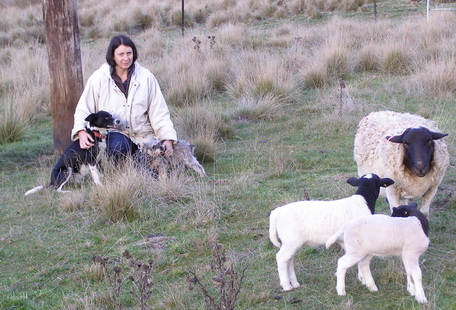
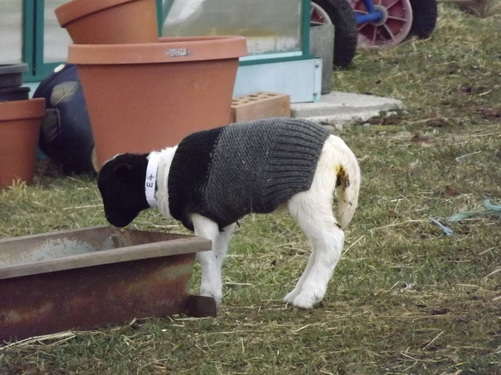
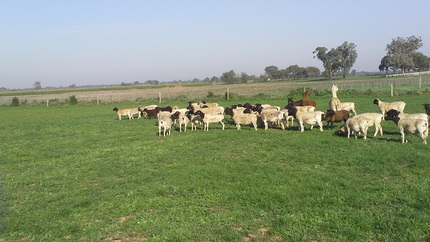
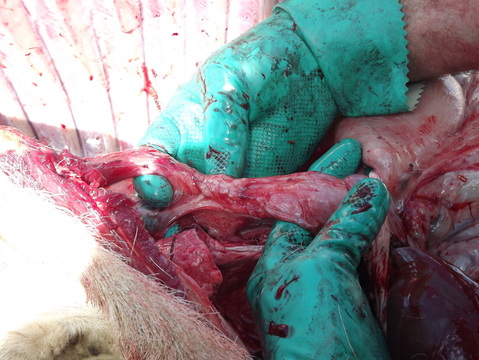
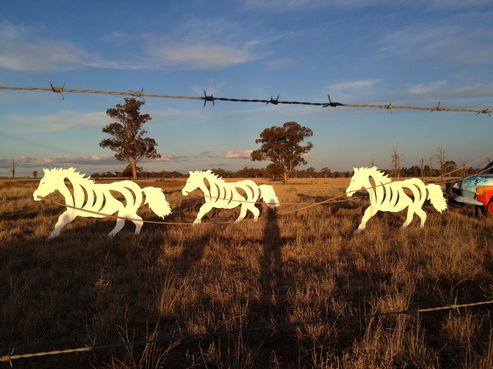
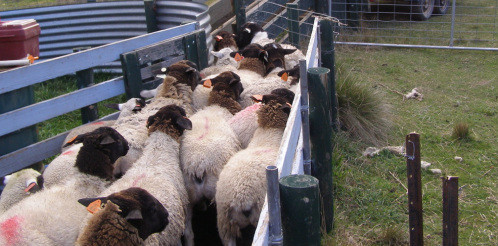
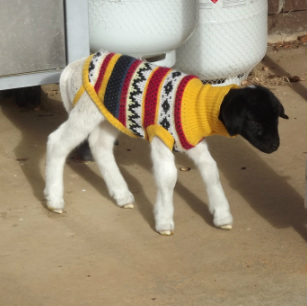
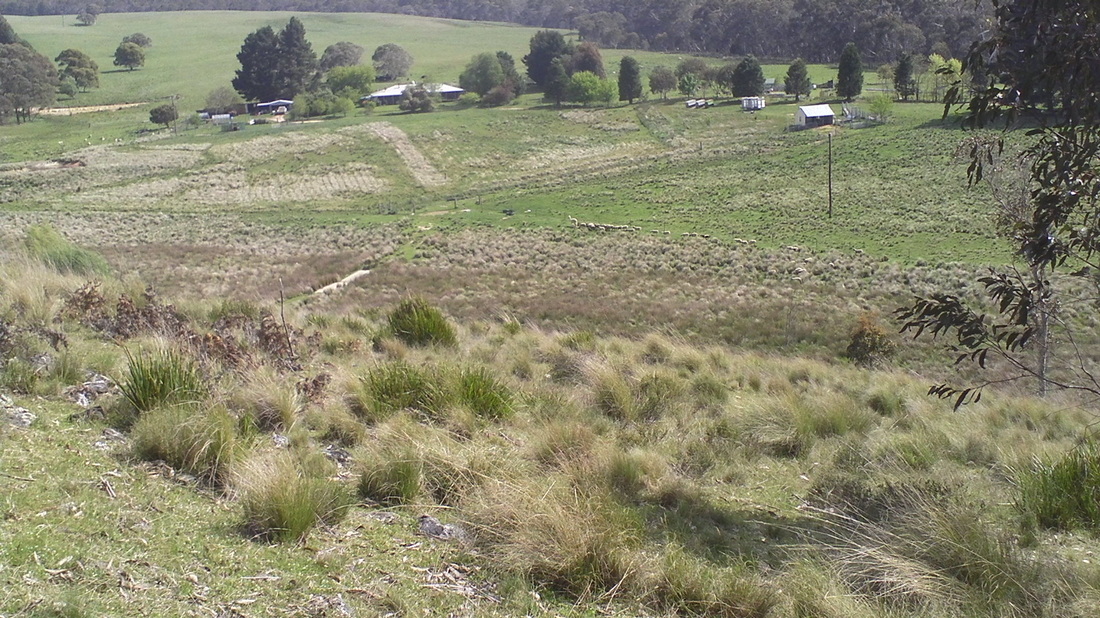
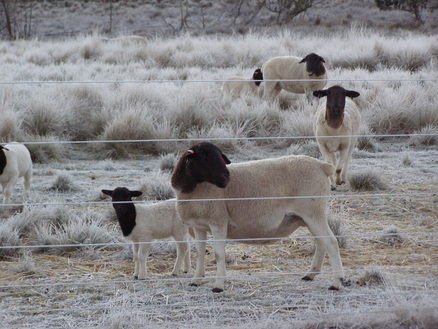
 RSS Feed
RSS Feed